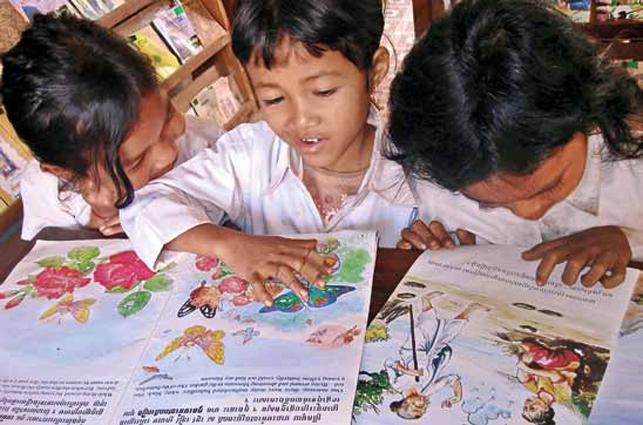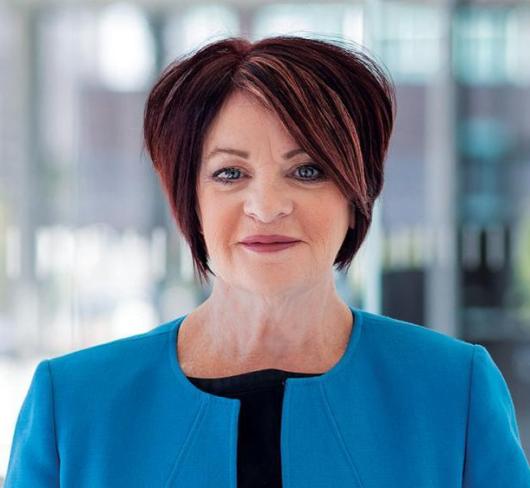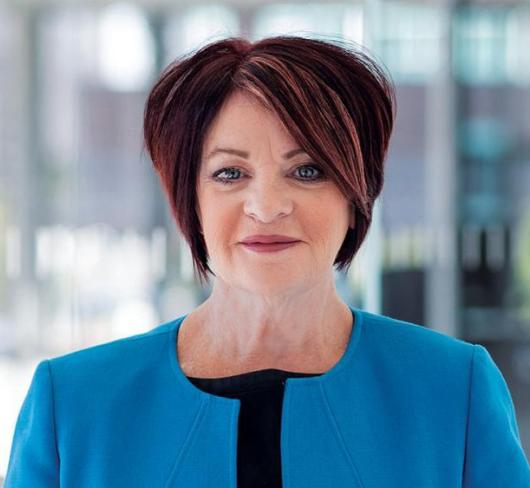
Making a Difference for Women and Girls in Rural Cambodia
In 2010, the ETFO Executive approved a partnership between the Maddox Jolie-Pitt Foundation (MJP) and ETFO, to provide support for women and girls living in rural and isolated villages in northwestern Cambodia. Cambodia is a country that was ravaged by decades of civil war (1970-1989). It was not until 1998 that peace was secured in Samlout, the last region in the country to be liberated from the guerrilla soldiers known as the Khmer Rouge. Land mines and other explosive devices,remaining from the war, are scattered across Samlout, with red landmine warning signs covering the landscape. The human toll is still very evident.
Samlout villagers are rich in spirit, but face extreme rural poverty,with over 70 percent liv ing on less than two dollars a day. This poverty has a stark impact on villagers’ health, nutrition, security, and education —especially for women and girls. Female villagers are much more vulnerable and are not afforded the same opportunities to complete basic primary education, participate in rural politics with an equal voice, or earn the necessary income to support their children.
Over the past year, a new and very disturbing threat has come to the forefront in this part of rural Cambodia: the trafficking of girls. Trafficking in Southeast Asia is on the rise, with international and local criminal groups recruiting and sending girls to other countries. especially Indonesia, Thailand, and Malaysia, to work as “domestic servants:· who are often forced into the entertainment/sex industry.
It is in this context that ETFO has partnered with the MJP Foundation and is contributing to a number of projects that support women and girls by promoting education. leadership development, literacy, and vocational training. and by addressing issues of health and security.
MJP started its work in Carnbodia in 2003, with an initial focus on environmental issues. such as stopping the illegal wildlife and timber trade. It was so on evident that while important, focusing solely on the environment could not adequately address the multiple and complex issues confronting the people of this region. As Stephan Bognar. the CEO of MJP argues. environmental security must encompass the environment and human development interventions in health, education, and food/nutrition security.
In 2006, MJP adopted the UN Millennium Development Goals as a blueprint/roadmap to alleviate extreme rural poverty in Samlout.with the additional goal of landmine clearance. MJP’s multisectoral integrated approach to human development encompasses environmental security and social and economic development, addressing both the “hardware” (infrastructure) and the “software” (capacity training) of development.
ETFO’s first project saw the development of a Women’s Prosperity Centre, which was established to provide a venue for women to meet, gain literacy skills.and access vocational training. It is also used as a women’s shelter in times of need.
A Samlout Women’s Advisory Committee was also created by MJP, and the local village women worked with the foundation on design· ing and implementing a variety of programs that would be delivered in the Women’s Prosperity Centre. Today, the Women’s Advisory Committee has become an important voice for women in the community. The committee provides advice to the local Commune Council (a village equivalent of a city hall) on how the needs of women can be addressed and provides important input in the development stages of programs for women and girls.
In the winter of 2011 ETFO First Vice President Susan Swackhammer, Vice-PresidentsMaureen Weinberger and Hilda Watkins, and Deputy General Secretary Marilies Rettig travelled to Sam!out to visit the Prosperity Centre, which was then under construction, and to meet with the Women’s Advisory Committee.lt was during this visit that ETFO representatives could see first-hand the multiplicity of challenges that people are facing in this post-conflict area. Even at this very early stage of development, it was clear the tremendous impact these facilities and the programs they would offer could have on the women and girls of Samlout.
Since the completion of the Women’s Prosperity Centre in January 2012, a number of activities have been created for the local women. For example, through the Women Advisory Committee, MJP helped the local honey hunters and village women build a small business in wild honey production (housed at the Women’s Prosperity Centre). The small profits generated from the sale of honey help to support women and their families.
On March 8, 2012, MJP also worked with the local authorities to celebrate International Women’s Day. Bringing together over 200 women and local leaders, the two themes of the day were domestic violence and “land rights are women’s rights.” Sadly, across Cambodia, many NGOs are saying that over 1 million citizens have been forcibly evicted from their land in the name of economic development. Many women, as the lead caretakers and providers, have seen their land,their only possession (and their economic lifeline), fall to agribusinesses with nothing in return.
ETFO also supported MJP in designing and building the first Early Childhood Care and Development Centre in the area.a facility that offers an early childhood education pro gram to three- and four-year-olds. In October 2011 the first two ECCD classes opened in Samlout. The teachers are two young village women. Both teachers attended two intensive four-week training sessions for community preschool teachers in Phnom Penh (an 11-hour drive from Samlout. and a completely different world) in the summer of 2011. Today, the teachers are educating and caring for more than 26 three-year-olds.
The ECCD Centre also provides a venue for MJP and ECCD teachers to meet with mothers who are learning the importance of early childhood education. developmental stages of children.other issues related to health.and what they can be doing at home to further support the development of their children. The Women’s Advisory Committee plays a key role in the success of the ECCD program-suggesting ways to promote the new program.the first of its kind in Samlout to families and mothers in particular.
The long-term goal is that the ECCD Centre will become the hub for education and nutrition programs for parents and children from birth to age six. and that small community based preschool programs will be developed for three- and four-year-olds in the surrounding villages.
Samlout’s first community library was also made possible with funds provided by ETFO. Although open to the entire community, the facility is particularly important for young girls. Samlout had other informal activities for boys-volleyball courts in schools or in empty fields provided an opportunity for hours of play for boys. Most girls, however. remained at home doing household tasks (or with nothing to fill their time). These girls now go to the library and enjoy reading, opening their dosed world to new opportunities.
The Women’s Prosperity Centre, ECCD Centre. and library have become community hubs. Located at the heart of a cluster of villages where the Samlout Commune Council meets.the three centres remind local decision makers (on a daily basis) of the significant positive impacts they have on the community. Being at the centre also makes it easier for the Women’s Advisory Committee to call upon the local government to eliminate the disconnect between policy on women’s rights and reality, and to seek ongoing support fur and enhancement of programs fur women and girls.
Resilient and determined to build better lives for themselves and their children. the women of Samlout are working to build a community that respects and values women and children. They are making this change within programs and facilities supported by ETFO. ETFO members can feel proud of the lasting impact their contribution is having on this community in rural Cambodia.

